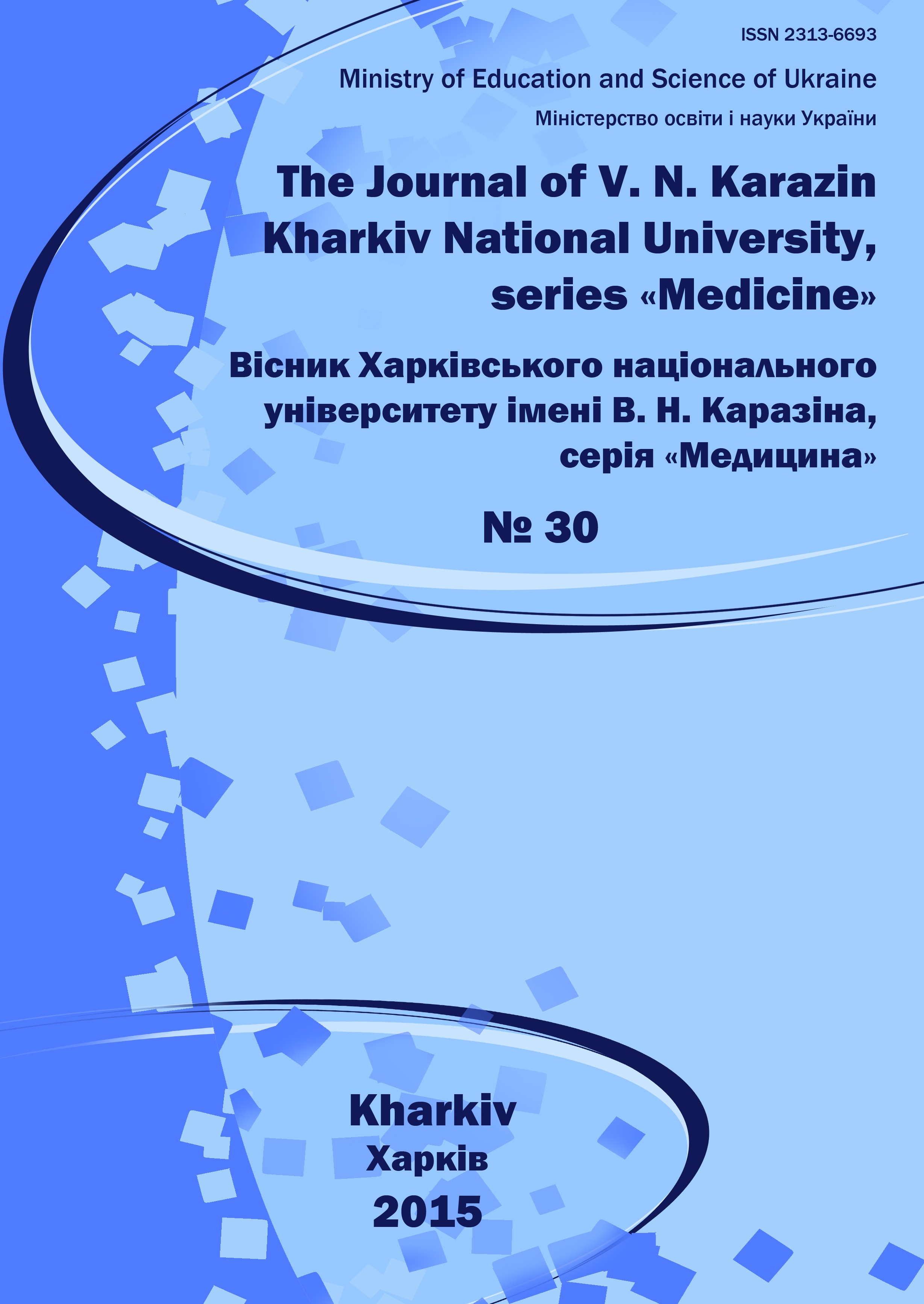FUNCTIONAL CLASS OF CHRONIC HEART FAILURE AND DYNAMIC OF HEMODYNAMIC PARAMETERS IN PATIENTS WITH IMPLANTED PACEMAKERS AT THE ANNUAL STAGE OF SUPPORTIVE DRUG THERAPY
Abstract
162 patients (89 men and 73 women) aged 69 ± 10 years were observed at the annual stage of supportive drug therapy after implantation of pacemakers in DDD/DDDR, VVI/VVIR and CRT-P/CRT-D modes. Changes of hemodynamic parameters were taken in consideration according to the functional class of chronic heart failure (CHF FC). Pacemakers implantation and supportive drug therapy led to transference of patients to the lower CHF FC with more significant results in CRT-P/CRT-D mode, normalization of heart rate (HR) in all CHF FC and stimulation modes, systolic (SBP) and diastolic blood pressure (DBP) in DDD/DDDR and CRT-P/CRT-D modes, end-systolic and diastolic volumes (EDV and ESV LV), left ventricular ejection fraction (LVEF) in CHF FC II in all stimulation modes and CHF FC III in DDD/DDDR and VVI/VVIR modes and size of the left atrium (LA) in CHF FC II in all stimulation modes and CHF FC I in VVI/VVIR mode. In thickness of posterior wall and interventricular septum of the left ventricle (LV PW and IVS), the sizes of the right atrium (RA) and right ventricle (RV) significant changes in any of CHF FC were not noticed, which requires drug therapy amplification.Downloads
References
Ishibashi K. Improvement of cardiac function by increasing stimulus strength during left ventricular pacing in cardiac resynchronization therapy / K. Ishibashi, T. Kubo, H. Kitabata [et al.] // Int Heart J. - 2015. – № 56 (1). – P. 62–66.
Abraham WT. Randomized controlled trial comparing simultaneous versus optimized sequential interventricular stimulation during cardiac resynchronization therapy / WT. Abraham, AR. León , MG. St John Sutton [et al.] // Am Heart J. - 2012. – Nov. № 164 (5). – P. 735–741.
Teichholz LE. Problems in echocardiographic volume determinations: echocardiographic-angiographic correlations in the presence of absence of asynergy / LE. Teichholz, T. Kreulen, MV. Herman [et al.] // Am J Cardiol. – 1976. – Jan. № 37 (1). – P. 7–11.
Voronkov L.G. Rekomendatsiyi z diagnostiki ta likuvannya hronichnoyi sertsevoyi nedostatnosti Asotsiatsiyi kardiologiv Ukrayini ta Ukrayinskoyi asotsiatsiyi fahivtsiv iz sertsevoyi nedostatnosti / L.G. Voronkov, K.M. Amosova, A.E. Bagrіy [et al.] // Ukrayinskiy kardiologichniy zhurnal. – 2013. - dodatok № 1. – Р. 1–52.
Fang D. Four years follow-up of epicardial left ventricular pacing by mini-thoracotomy for cardiac resynchronisation therapy in congestive heart failure (four cases) / D. Fang, W. Huang, H. Li // Kardiol Pol. – 2015. – № 73 (3) – Р. 188–193.
Laksman Z. Model-based navigation of left and right ventricular leads to optimal targets for cardiac resynchronization therapy: a single-center feasibility study / Z. Laksman, R. Yee, J. Stirrat [et al.] // Circ Arrhythm Electrophysiol. – 2014. – Dec. № 7 (6). – P. 1040–1047.
Pappone C. Multipoint left ventricular pacing improves acute hemodynamic response assessed with pressure-volume loops in cardiac resynchronization therapy patients / C. Pappone, Ž. Ćalović, G. Vicedomini [et al.] // Heart Rhythm. – 2014. – Mar. № 11 (3). – P. 394–401.
Chang PC. Remote past left ventricular function before chronic right ventricular pacing predicts responses to cardiac resynchronization therapy upgrade / PC. Chang, HT. Wo, TH. Chen [et al.] // Pacing Clin Electrophysiol. – 2014. – Apr. № 37 (4). – P. 454–463.
The Journal of V. N. Karazin Kharkiv National University, series Medicine has following copyright terms:
- Authors retain copyright and grant the journal right of first publication with the work simultaneously licensed under a Creative Commons Attribution License that allows others to share the work with an acknowledgement of the work’s authorship and initial publication in this journal.
- Authors are able to enter into separate, additional contractual arrangements for the non-exclusive distribution of the journal’s published version of the work, with an acknowledgement of its initial publication in this journal.
- Authors are permitted and encouraged to post their work online prior to and during the submission process, as it can lead to productive exchanges, as well as earlier and greater citation of published work.




